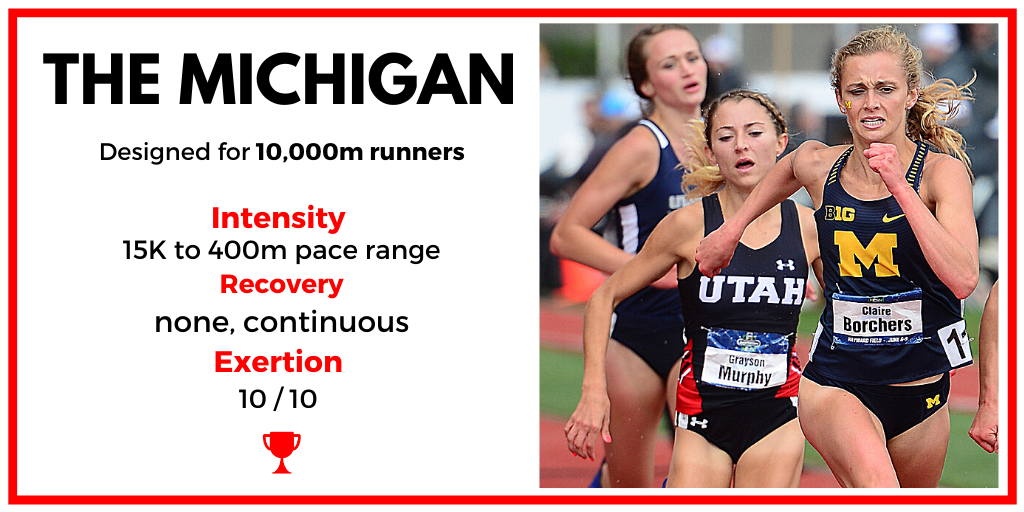Workout of the Day: The Michigan
The Michigan
Intensity — 15K to 400m pace
Recovery — none, continuous effort
Exertion — 10/10
Context & Details
This is one of the hardest workouts I’ve ever done (back in college) and seen. This workout may be harder than a race.
Alan Webb agrees: “That’s the hardest workout I ever did.”
It’s brutal. But it’s highly, highly effective.
The runners who perform this session will need to set their ego aside for the first 1-5 attempts. It’s very likely they will not be able to complete it. That’s OK — few do.
“The Michigan” got its nickname from Vin Lananna when he was the head coach at Dartmouth in the 1980s and early 1990s. He adopted it from the brilliant coaching mind that is Ron Warhurst, a long-time Michigan track coach and founder of the Very Nice Track Club. Coach Ronnie’s original inspiration was a Prefontaine workout Bill Dellinger told him about, but then he added his own “Marine tough” flair to enhance it as the Rite of Passage workout of folklore it has become.
Here’s the session construct:
1 Mile on the track @ 10K Goal Pace,
2,000m on the roads @ Steady Tempo (aka 15K race pace)
1200m on the track @ 5K Goal Pace
2,000m on the roads @ 15K race pace
800m on the track @ 3K Goal
2,000m on the roads @ 15K race pace
400m on the track @ 100%
No stopping. This is a continuous effort.
This session has it all. It develops essentially every key performance variable tied to distance runner performance: vVO2 Max, resistance to fatigue, running economy, Lactate-Threshold velocity, aerobic power and neuromuscular power.
I think only advanced runners (10+ years of steady development) should include this session as written in their program. However, you can adjust it for the less experienced/fit runner.
Simple cut every distance by 1/2 to 3/4 length, depending on who you’re working with.
As Steve Magness likes to say, this is a workout that will “embarrass” your body. But thankful, with appropriate recovery (3-4 days and up to a week) and consistent reruns (about every three weeks in early season), the runner will adapt and become more robust to handle competitive demands on race day.

